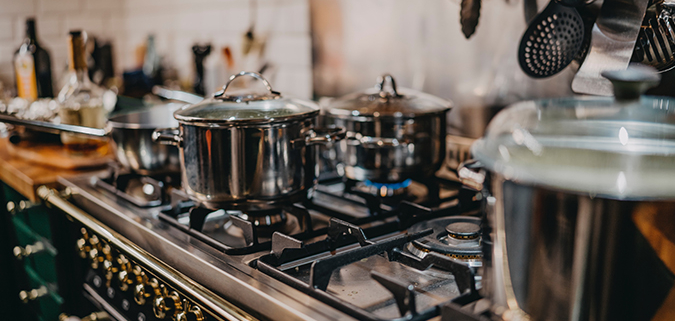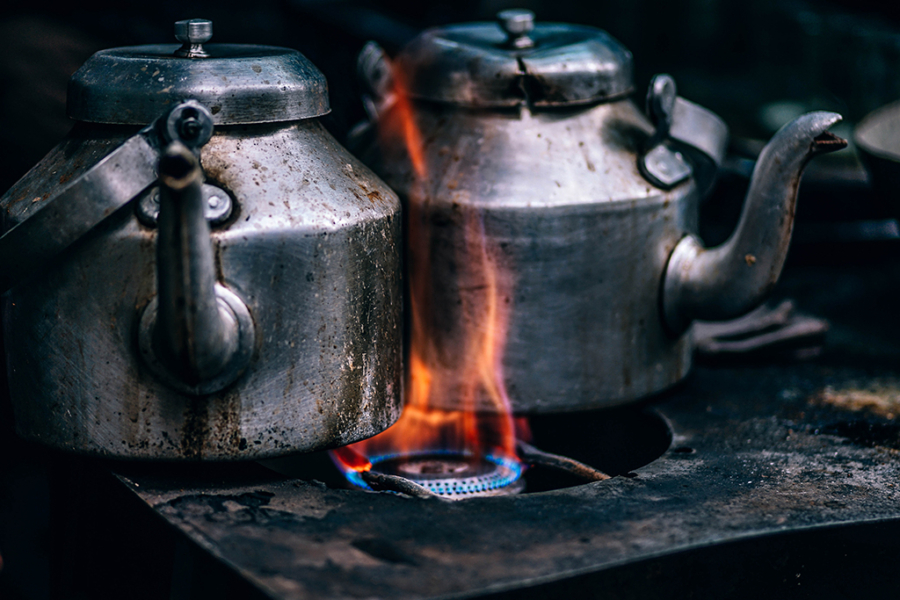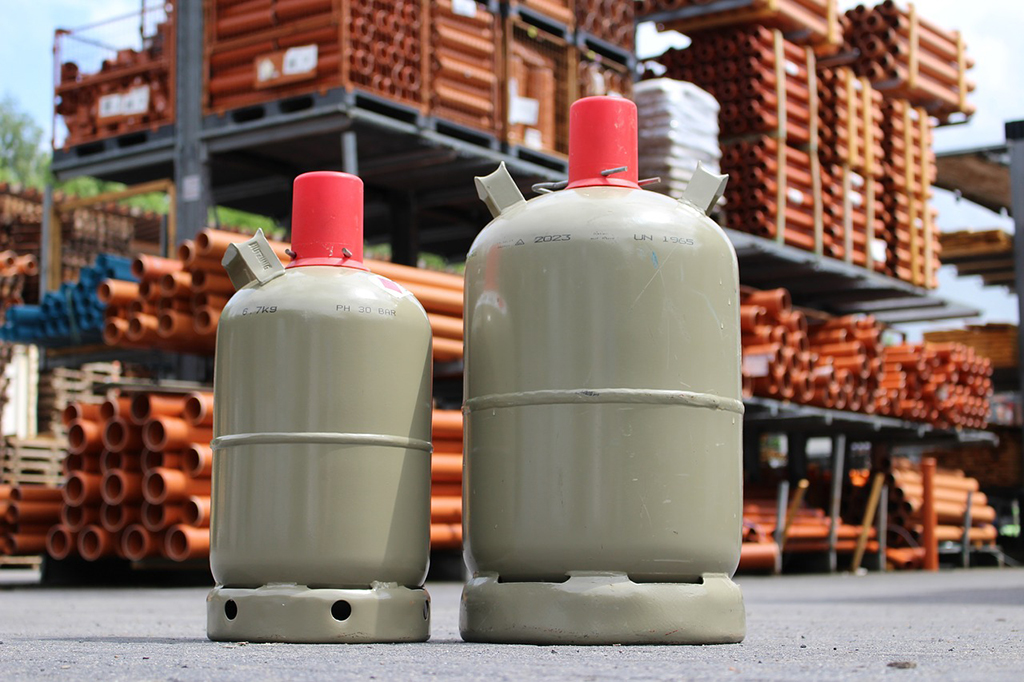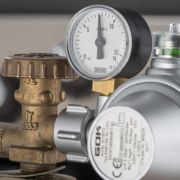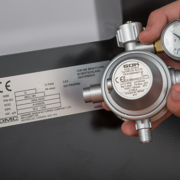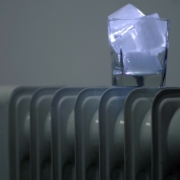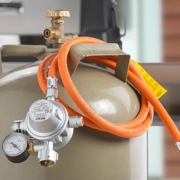What should I pay attention to when installing and operating a propane-powered gas stove at home?
Do you want to operate a gas stove or gas hob with a gas cylinder in your house or rented flat? We’ll clear up some important questions in this article, such as: What regulations and technical rules are there? Which gas cylinders are permitted in your flat or home, and how must you store these? Which pressure reducer needs to be used, and what to look out for when installing it?
As always, cooking with gas enjoys great popularity. There is either already a connection to the natural gas network, or hobby cooks or professional chefs rely on propane, AKA LPG, as their source of energy in the gas cylinder.
Focus on the nozzle
Before we start: This article only deals with operating gas stoves with propane gas. It may well be the case that some gas stoves and gas hobs are fitted with nozzles for natural gas as default. However, if you want to operate your stove and hob using one or more propane gas cylinders, you need specific nozzles.
Don’t worry: You don’t need to trawl through the internet every night to find the right nozzles from a mail-order company in Taiwan. Many manufacturers also include the right nozzles for gas cylinder operation, which means that you can convert from natural gas to propane without difficulty.
Tip: If you already know in advance that you want to operate the stove via gas cylinder, make sure by confirming with the manufacturer or retailer that the right nozzles are included in the delivery.
Using and storing small cylinders.
Before purchasing the stove, you should also start thinking about which gas cylinders you would like to use, where they should go and what the storage location should be. It is generally up to the operator to decide which propane gas cylinder they will use: 5, 8, 11 or 33 kg cylinders are permitted – even if there are restrictions.
If the gas cylinder is to be kept in your home or rented flat, only the small cylinders can be considered. For example, these are all cylinders with a filling weight of 5, 8 or 11 kilograms – to a maximum of 16 kilograms.
If using these small cylinders, you may have one connected directly, and you may store another one in your house or flat. Both gas cylinders – no matter whether full or empty – must not be kept in the same room, and definitely not in bedrooms! That means that, if one gas cylinder is connected for operation, you may store one more inside your house or flat.
Using and storing large cylinders
Theoretically, you may also use propane gas cylinders with a filling weight of 33 kilograms in the building, for example, but that would require you to have a separate cylinder storage room which must also meet certain requirements.
It is not practical for there to be a separate space for this, so the 33 kg cylinders must be kept outdoors. There, operators can also build up multiple cylinder systems and store several gas cylinders, but this area would then need to be protected “from unauthorised access”, according to the Technical Rules for LPG (TRF) – for example, this could be a cylinder cabinet made from non-flammable materials.
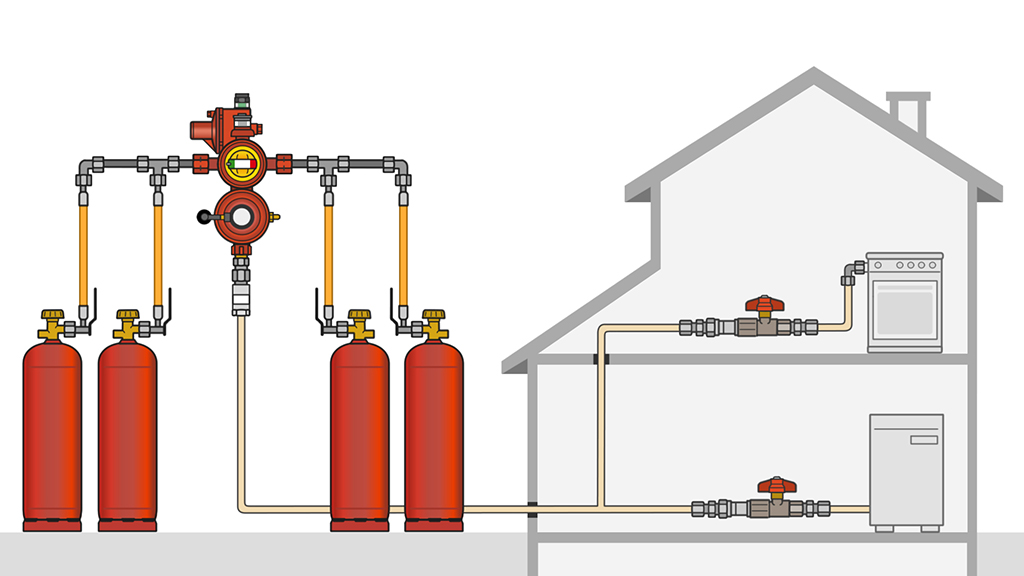
Gas stove pressure reducer – e.g. 5 or 11 kg cylinder
No gas stove or gas hob in the world works without a pressure reducer, also known as a pressure regulator. This keeps the high, temperature-dependent pressure of the gas cylinder at a constant level to allow optimal operation of the gas equipment.
According to the regulations from the TRF, pressure reducers which are used within the house must have the following:
- Over-pressure safety device with visual indicator
- Pressure gauge
- Thermal cut-out device
GOK has two sets to offer which make it especially easy to set up a secure and safe connection between the gas cylinder and gas stove or hob. On one hand, we have something called a Pro stove connection set, and the other is a Basic stove connection set. We have listed the differences and advantages in a graphic:
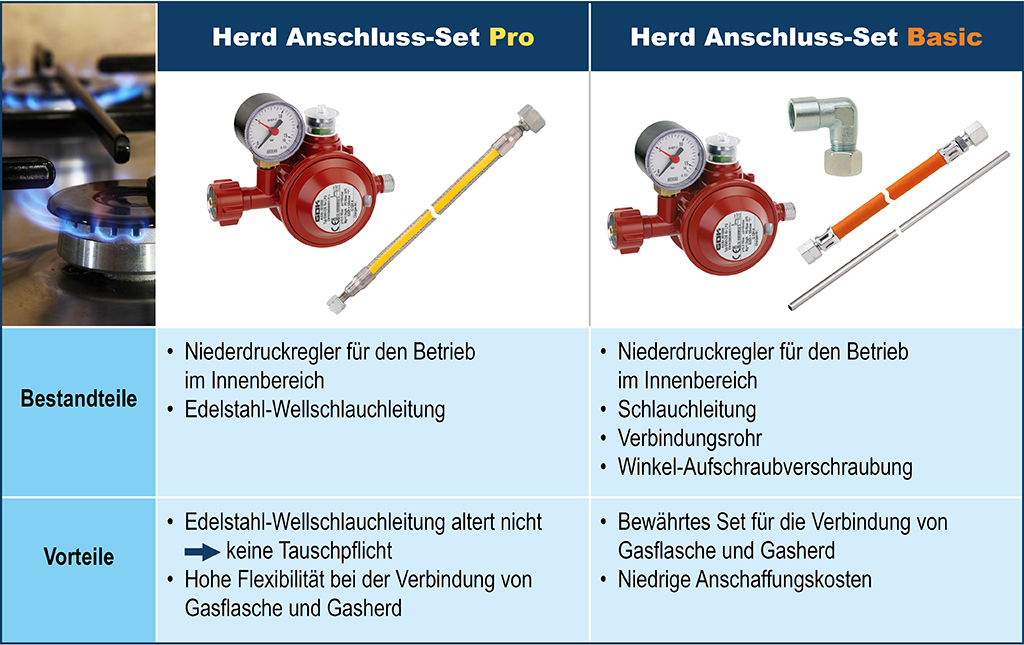
Gas stove pressure reducer – 33 kg cylinder
As mentioned under Using and storing large cylinders, there are different options. This also depends on which pressure reducer the operator is to use. What is certain is: The pressure reducer definitely needs the safety devices OPSO (overpressure shut-off device) and PRV (pressure relief valve).
Apart from this, it comes down to which system form the operator chooses:
- More information about the single-cylinder system
- More information about multiple cylinder systems with automatic changeover
- More information about multiple cylinder systems with manual changeover
Conclusion
Especially when operating a gas stove or hob at home with a small cylinder, installation and operation are rather simple. Operators choose either the Pro or Basic stove connection set and have all the required components according to the Technical Rules for LPG.
If you wish to operate the stove or hob via a large cylinder stored outdoors, you should get in touch with a specialist company in advance. Obtaining more information from specialists won’t harm your planned operations either with a small cylinder or with a large one. After all, the gas system will need to be tested once by a specialist/professional before start-up and again every 10 years, and the results of these tests are documented. Pressure reducers and gas hoses must be replaced with new ones every 10 years.
